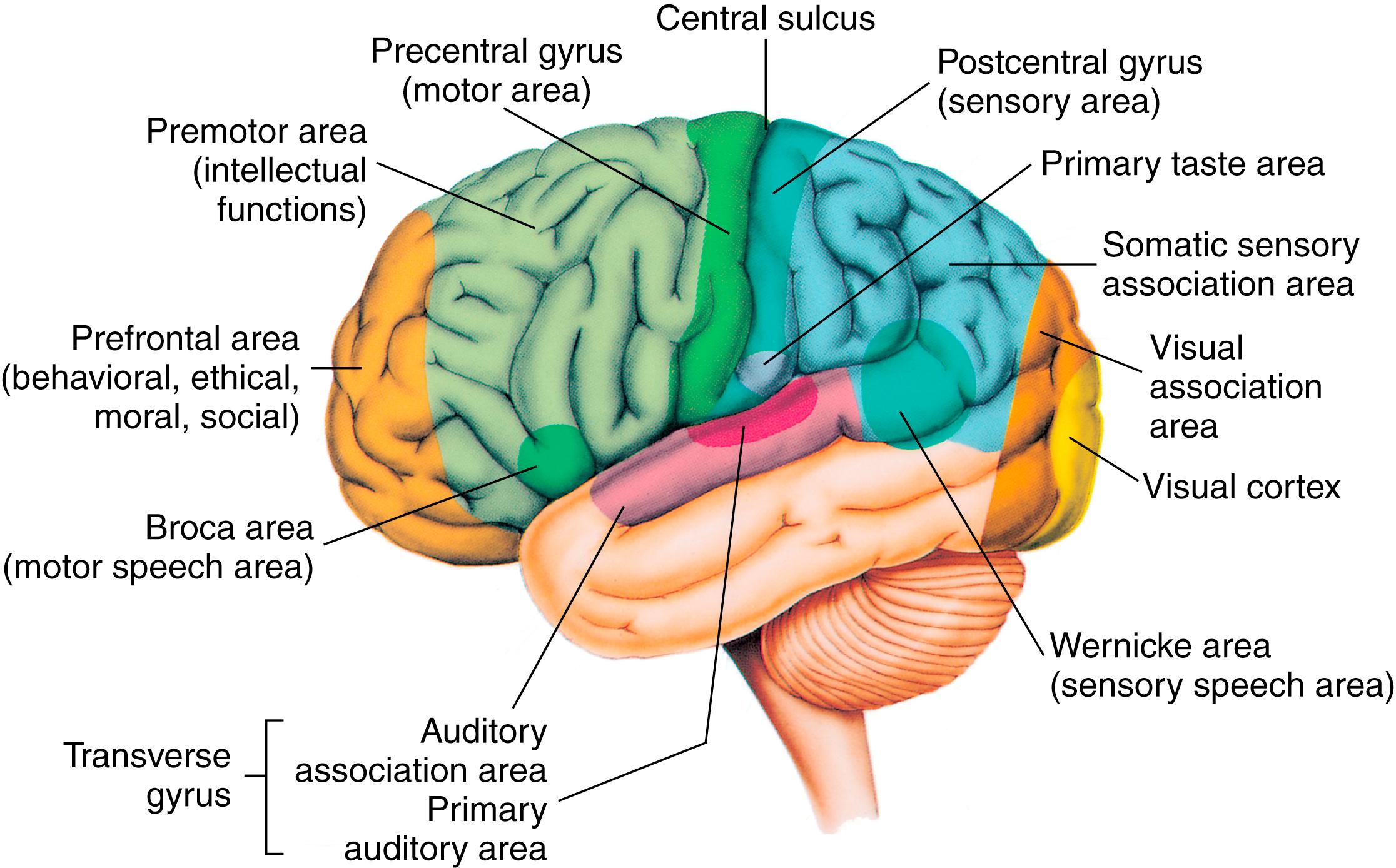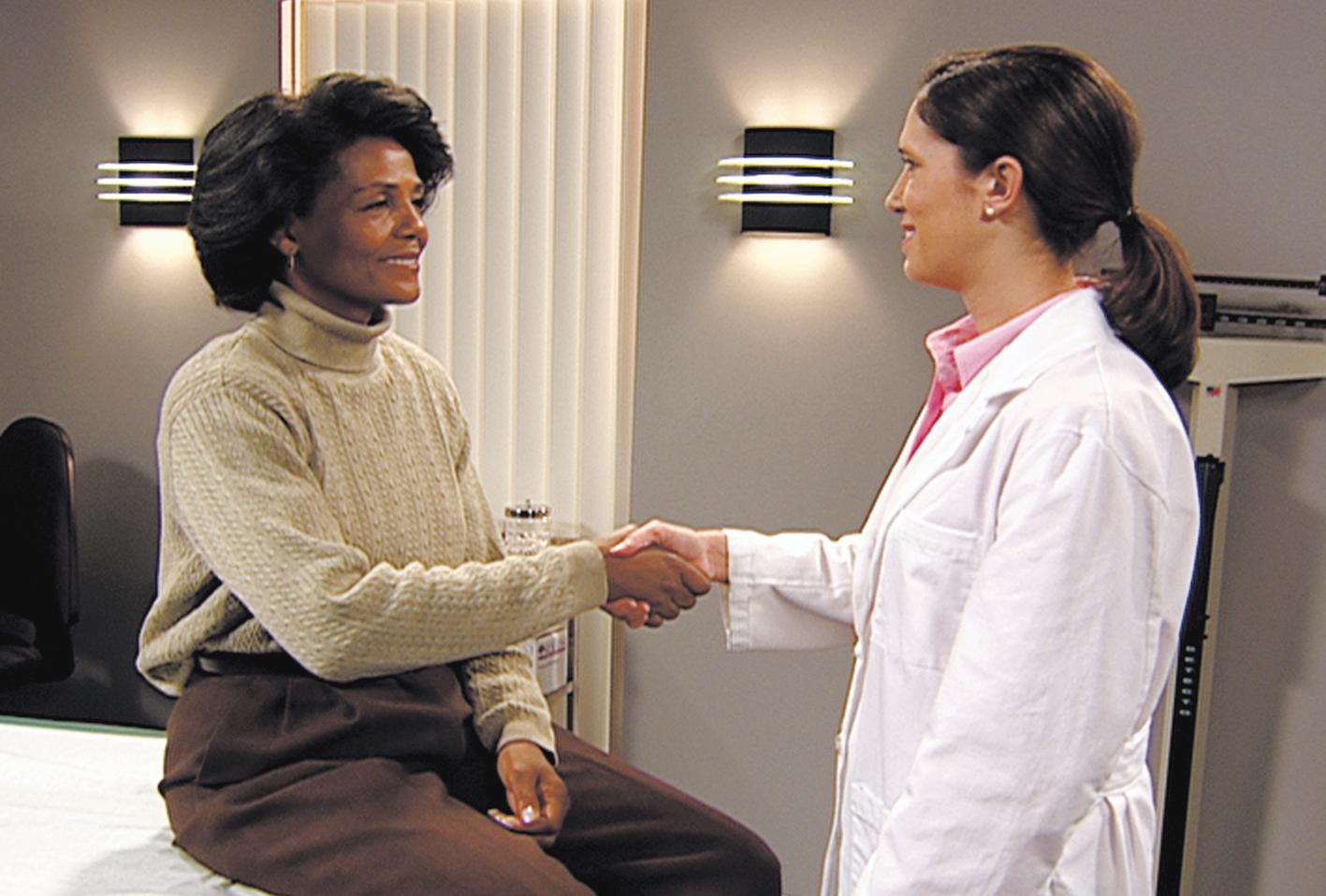Physical Address
304 North Cardinal St.
Dorchester Center, MA 02124
The mental status portion of the neurologic examination is a complex process. Mental status is the total expression of a person’s emotional responses, mood, cognitive functioning (ability to think, reason, and make judgments), and personality. A major focus of the examination is the identification of the individual’s strengths and capabilities for interaction with the environment. This chapter focuses on the mental status evaluation of the individual’s overall cognitive state. See Chapter 23 for the assessment of neurologic lesions that cause alterations in mental status.
Observe physical appearance and behavior
Investigate cognitive abilities:
State of consciousness
Response to analogies
Abstract reasoning
Arithmetic calculation
Memory
Attention span
Observe speech and language for voice quality, articulation, coherence, and comprehension.
Evaluate emotional stability for signs of depression, anxiety, thought content disturbance, and hallucinations.
The cerebrum of the brain is primarily responsible for a person’s mental status. Many areas in the cerebrum contribute to the total functioning of a person’s mental processes. Two cerebral hemispheres, each divided into lobes, comprise the cerebrum. The gray outer layer—the cerebral cortex—houses the higher mental functions and is responsible for perception and behavior ( Fig. 7.1 ).

The frontal lobe, containing the motor cortex, is associated with speech formation (in the Broca area). This lobe is responsible for decision making, problem solving, the ability to concentrate, and short-term memory. Associated areas—related to emotions, affect, drive, and awareness of self and the autonomic responses related to emotional states—also originate in the frontal lobe.
The parietal lobe is primarily responsible for receiving and processing sensory data.
The temporal lobe is responsible for the perception and interpretation of sounds as well as localizing their source. It contains the Wernicke speech area, which allows a person to understand spoken and written language. The temporal lobe is also involved in the integration of behavior, emotion, and personality, as well as long-term memory.
The limbic system mediates certain patterns of behavior that determine survival (e.g., mating, aggression, fear, and affection). Reactions to emotions such as anger, love, hostility, and envy originate here, but the expression of emotion and behavior is mediated by connections between the limbic system and the frontal lobe. A major function is memory consolidation needed for long-term memory.
The reticular system, a collection of nuclei in the brainstem, regulates vital reflexes such as heart and respiratory functioning. It also maintains wakefulness, which is important for consciousness and for awareness and arousal functions. Disruption of the ascending reticular activating system can lead to altered mental status (e.g., confusion and delirium).
All brain neurons are present at birth in a full-term infant, but brain development continues with the myelinization of nerve cells over several years. Brain insults, such as infection (e.g., Zika virus or rubella), trauma, or metabolic imbalance, can damage brain cells, which may result in serious permanent dysfunction in mental status. Genetic, metabolic, and chromosomal disorders may also affect cognitive development and mental status.
Intellectual maturation continues, with greater capacity for information and vocabulary development. Abstract thinking (i.e., the ability to develop theories, use logical reasoning, make future plans, use generalizations, and consider risks and possibilities) develops during this period. Judgment begins to develop with education, intelligence, and experience.
Cognitive function should be intact in healthy older adults but declines in cognitive abilities occur in some older adults after 60 or 70 years of age. Variations in genetics, environment, diet, exercise, and chronic disease have an impact on the cognitive function of older adults. Decreases in the speed of information processing and psychomotor speed accompanied by less cognitive flexibility are expected with healthy aging. However, cognitive declines in executive functioning (the ability to plan and develop strategies, organize, concentrate and remember details, and manage activities) and memory are associated with cognitive impairment (Wischenka, et al., 2016). An estimated 2.4 to 5.5 million persons in the United States have dementia with increasing prevalence by age (Langa, et al. 2017).
For each of the symptoms or conditions discussed in this section, targeted topics to include in the history of the present illness are listed. Responses to questions about these topics provide clues for focusing the physical examination and the development of an appropriate diagnostic evaluation. Questions regarding medication use (prescription and over-the-counter preparations) as well as complementary therapies are relevant for each area.
Abrupt or insidious onset: intermittent, fluctuating, or persistent; association with time of day or emotional crisis
Associated health problems: new hearing or vision impairment; neurologic disorder, vascular occlusion, or brain injury; systemic infection; withdrawal from alcohol; metabolic or electrolyte disorder
Associated symptoms: delusions, hallucinations (imaginary perceptions), mood swings, anxiety, sadness, lethargy or agitation, insomnia, change in appetite, drug toxicity
Medications: anticholinergics, benzodiazepines, opioid analgesics, tricyclic antidepressants, levodopa or amantadine, diuretics, digoxin, antiarrhythmics, sedatives, hypnotics, or complementary therapies such as gingko biloba and St. John’s wort
Troubling thoughts or feelings, constant worry; change in outlook on life or change in feelings; feelings of hopelessness; inability to control feelings
Low energy level, awakens feeling fatigued, agitation, feels best in the morning or at night
Recent changes in living situation, death or relocation of friends or family members, changes in physical health
Thoughts or plans for hurting self and/or others, thoughts about dying, hopelessness, no plans for the future
Medications: antidepressants; medications that may cause or worsen depression (e.g., antihypertensive agents, corticosteroids, beta-blockers, calcium channel blockers, barbiturates, phenytoin, anabolic steroids)
Sudden, unexplained episodes of intense fear, worry, anxiousness, or panic for no apparent reason; afraid will be unable to escape or get help in certain situations; cannot control worrying; spends excessive time repeatedly doing or checking things
Feels uncomfortable in or avoids situations or events that involve being with people
Exposure to frightening or traumatic events
Associated symptoms: panic attacks, obsessive thoughts, or compulsive behaviors
Medications: antidepressants, steroids, benzodiazepines
Neurologic disorder, brain surgery, brain injury, residual effects, chronic disease, intellectual delay, or debilitating condition
Psychiatric disorder or hospitalization
Psychiatric disorders, mental illness, alcoholism
Alzheimer disease
Learning disorders, intellectual disability, autism
Emotional status: feelings about self; anxious, restless, or irritable; discouraged or frustrated; problems with money, job, legal system, spouse, partner, or children; ability to cope with current stressors in life
Life goals, attitudes
Relationship with family members
Intellectual level: education history, access to information, mental stimulation
Communication pattern, able to understand questions, coherent and appropriate speech, change in memory or cognitive thought processes
Changes in sleeping or eating patterns; change in appetite or diet, weight loss or gain; decreased sexual activity
Use of alcohol or illicit drugs, especially mood-altering drugs
Speech and language: timing of first words, words understood, progression to phrases and sentences
Behavior: temper tantrums, ease in separating from family or adjusting to new situations
Performance of self-care activities: dressing, toileting, feeding
Personality and behavior patterns: changes related to any specific event, illness, or trauma
Learning or school difficulties: associated with interest, hyperactivity, or ability to concentrate
Risk-taking behaviors
School performance and peer interactions
Family interactions
Reluctance to talk about attitudes, behaviors, and experience
Changes in cognitive functioning, thought processes, memory; association with medications prescribed (e.g., opioids, benzodiazepines, antidepressants, corticosteroids, muscle relaxants)
Changes in activities of daily living (ADLs), e.g., money management, food preparation
Depression: somatic complaints, hopelessness, helplessness, lack of interest in personal care
Mental status is assessed continuously during the entire patient interaction by evaluating their alertness, orientation, cognitive abilities, and mood ( Box 7.1 ). Observe the patient’s physical appearance, behavior, and responses to questions asked during the history ( Fig. 7.2 ). Note any reliance on an accompanying adult to answer questions. Make a point of asking the patient to provide responses. Note any variations in response to questions of differing complexity. Speech should be clearly articulated. Questions should be answered appropriately, with ideas expressed logically, relating current and past events.
The shorter screening examination is commonly used for health visits when no known mental status problem is apparent. Information is generally obtained during the history by observation of behavior and responses to questions in the following areas.
Grooming
Emotional status
Body language
Mood and feelings
Thought processes
State of consciousness
Memory
Attention span
Judgment
Voice quality
Articulation
Comprehension
Coherence
Aphasia

Become a Clinical Tree membership for Full access and enjoy Unlimited articles
If you are a member. Log in here